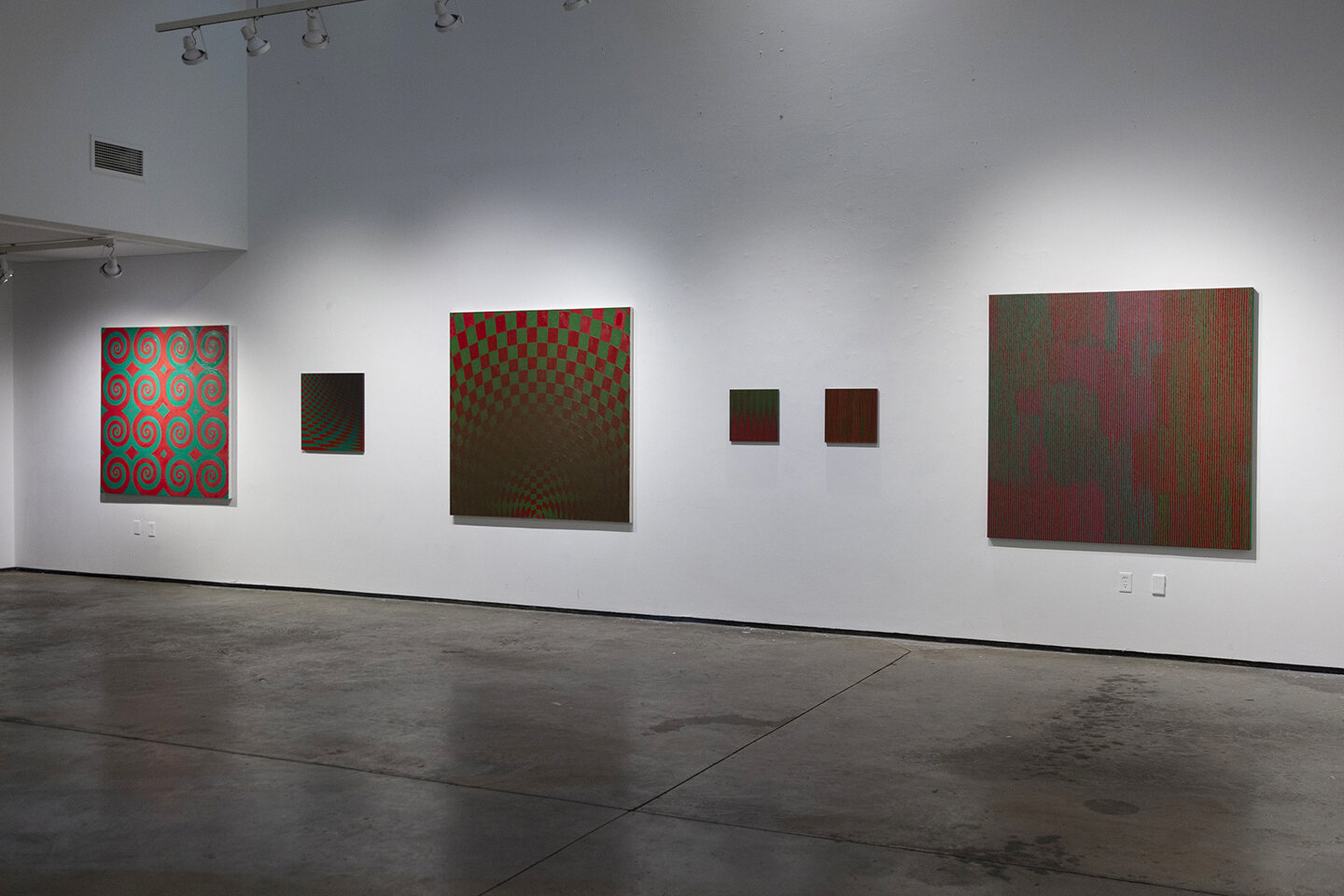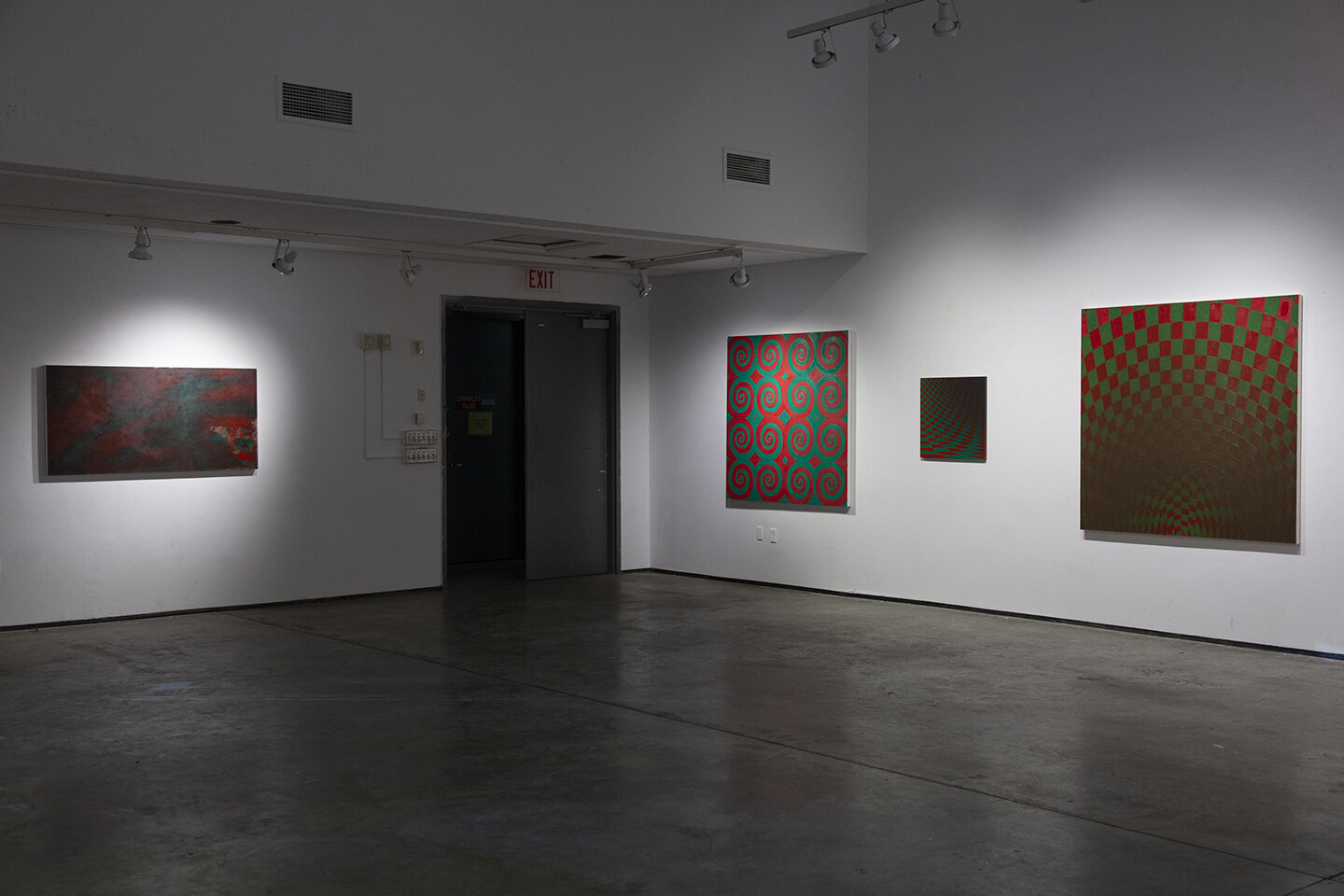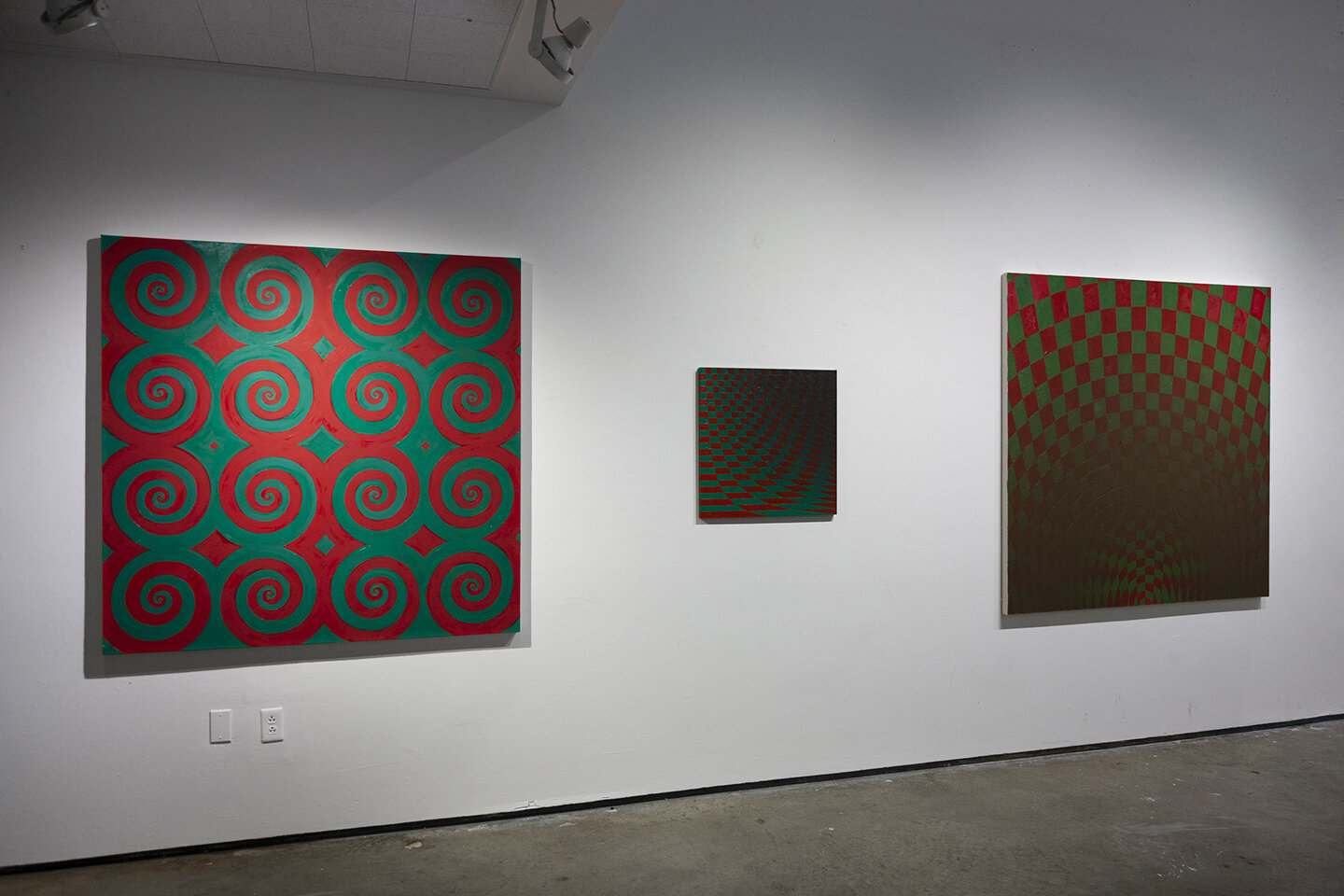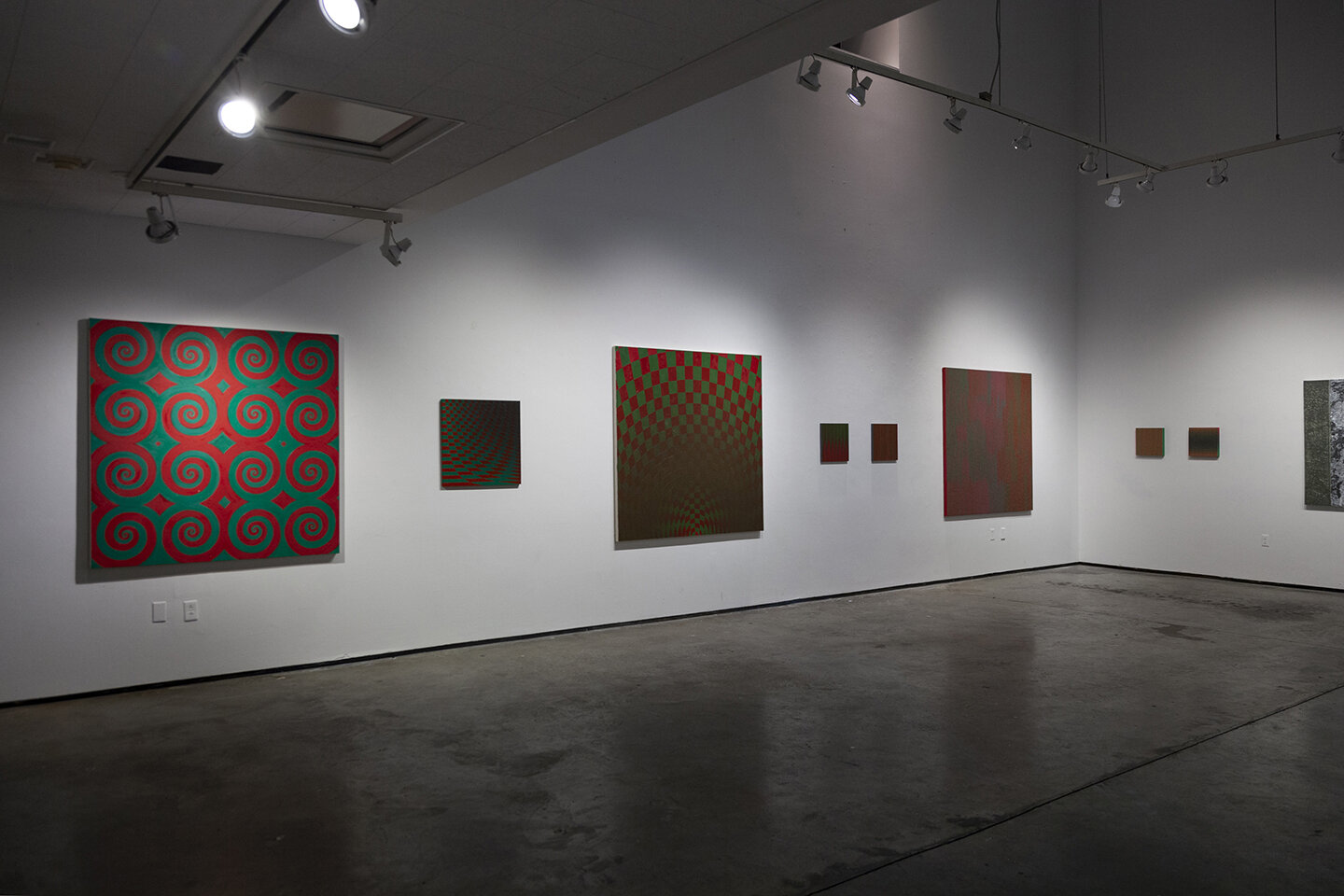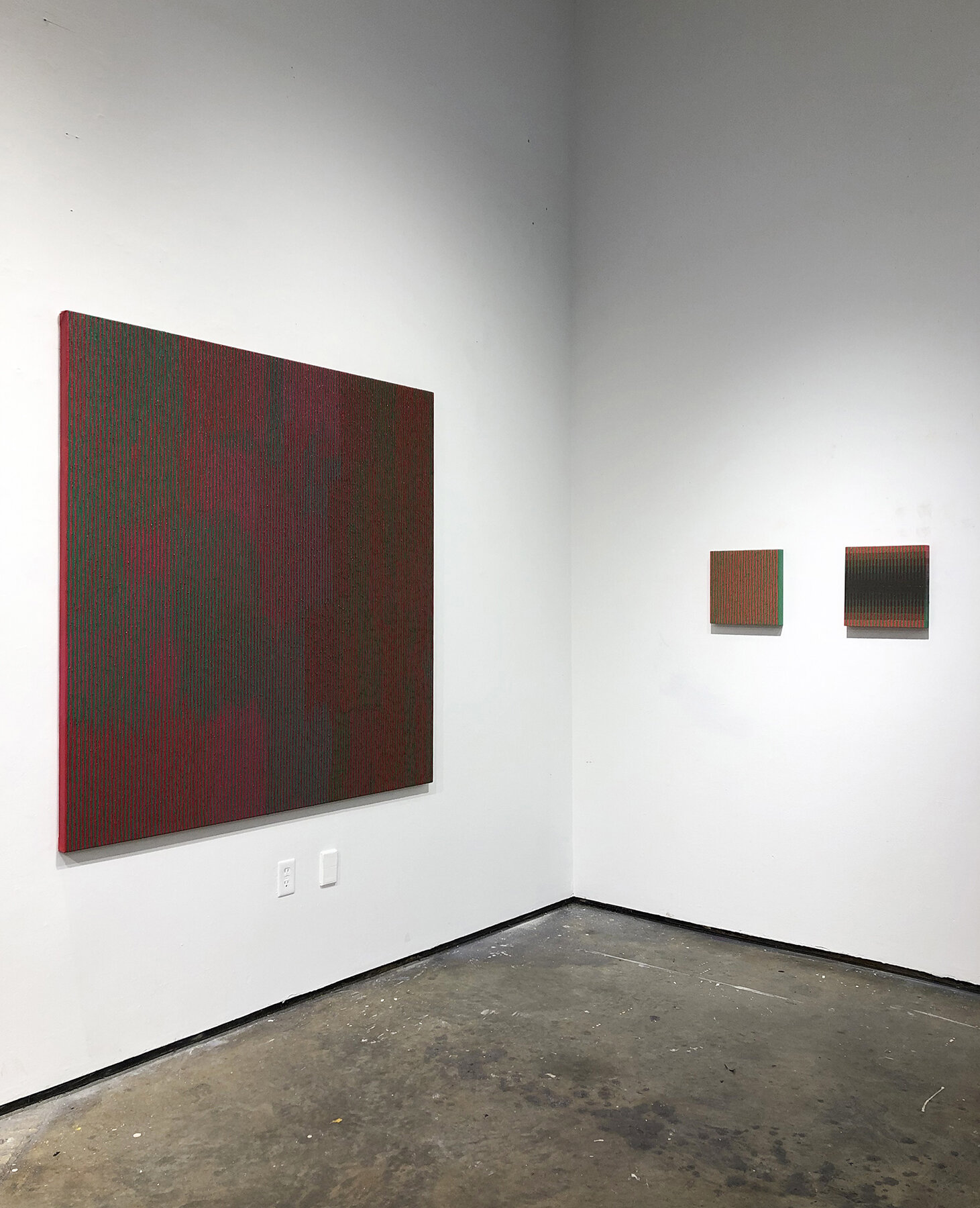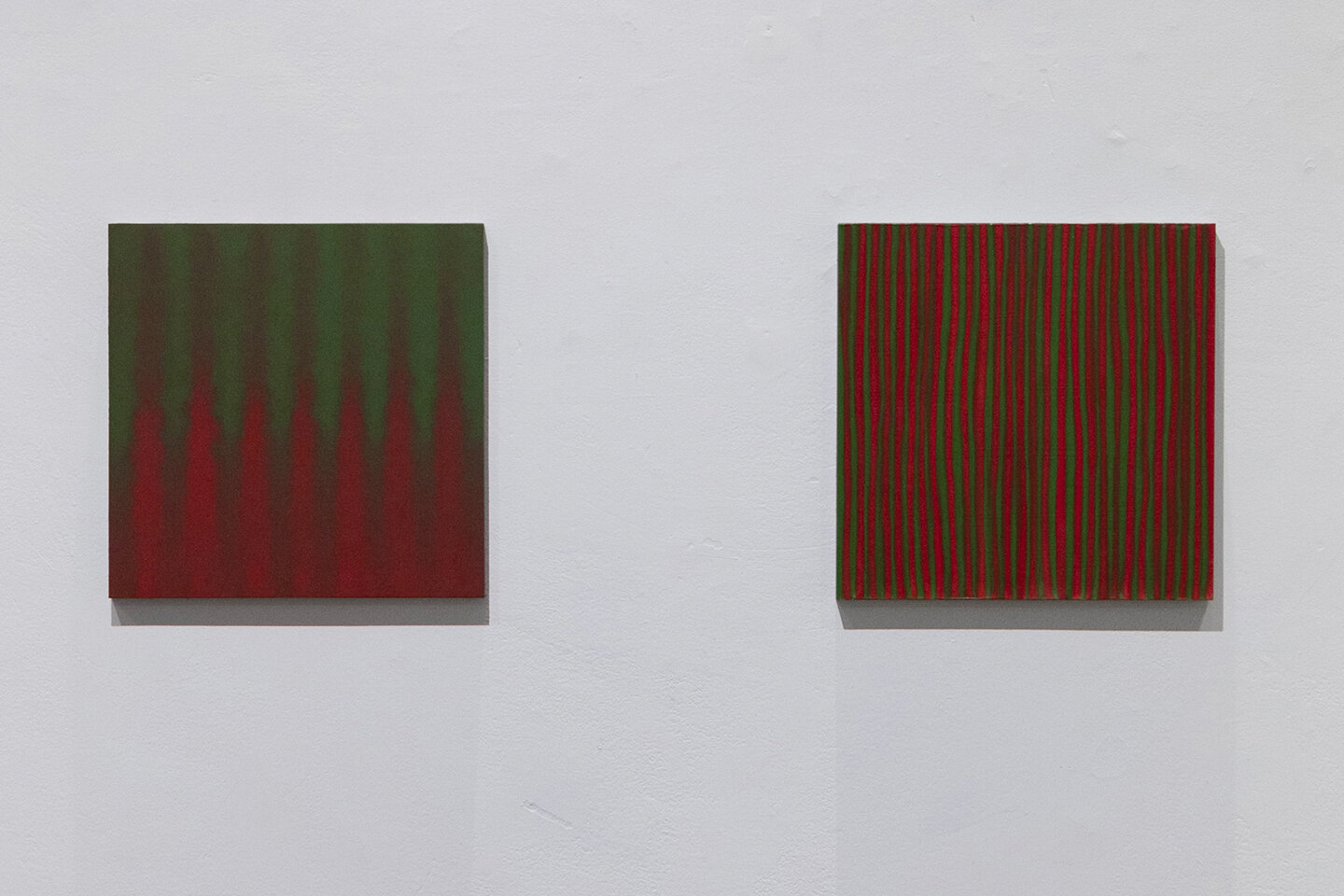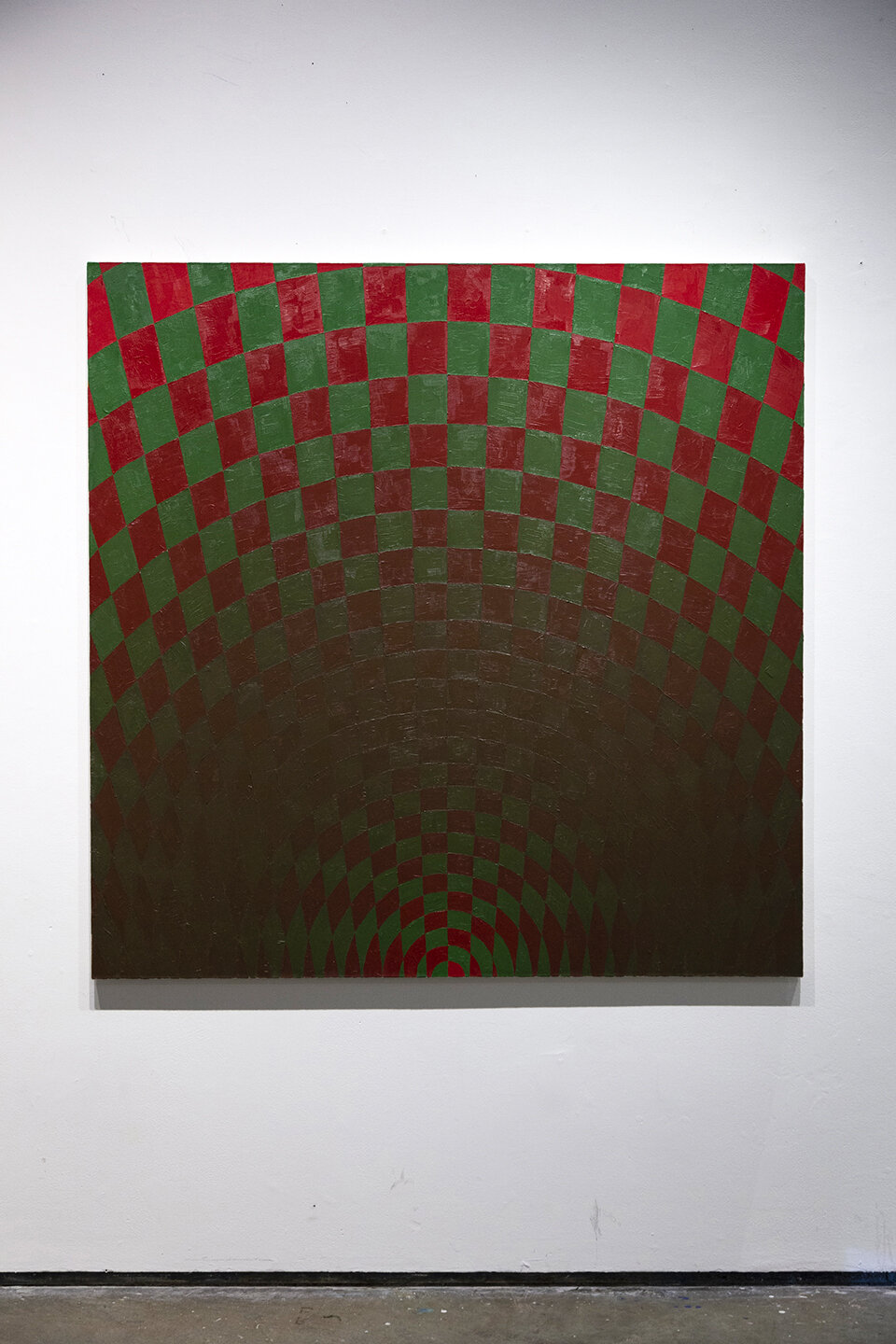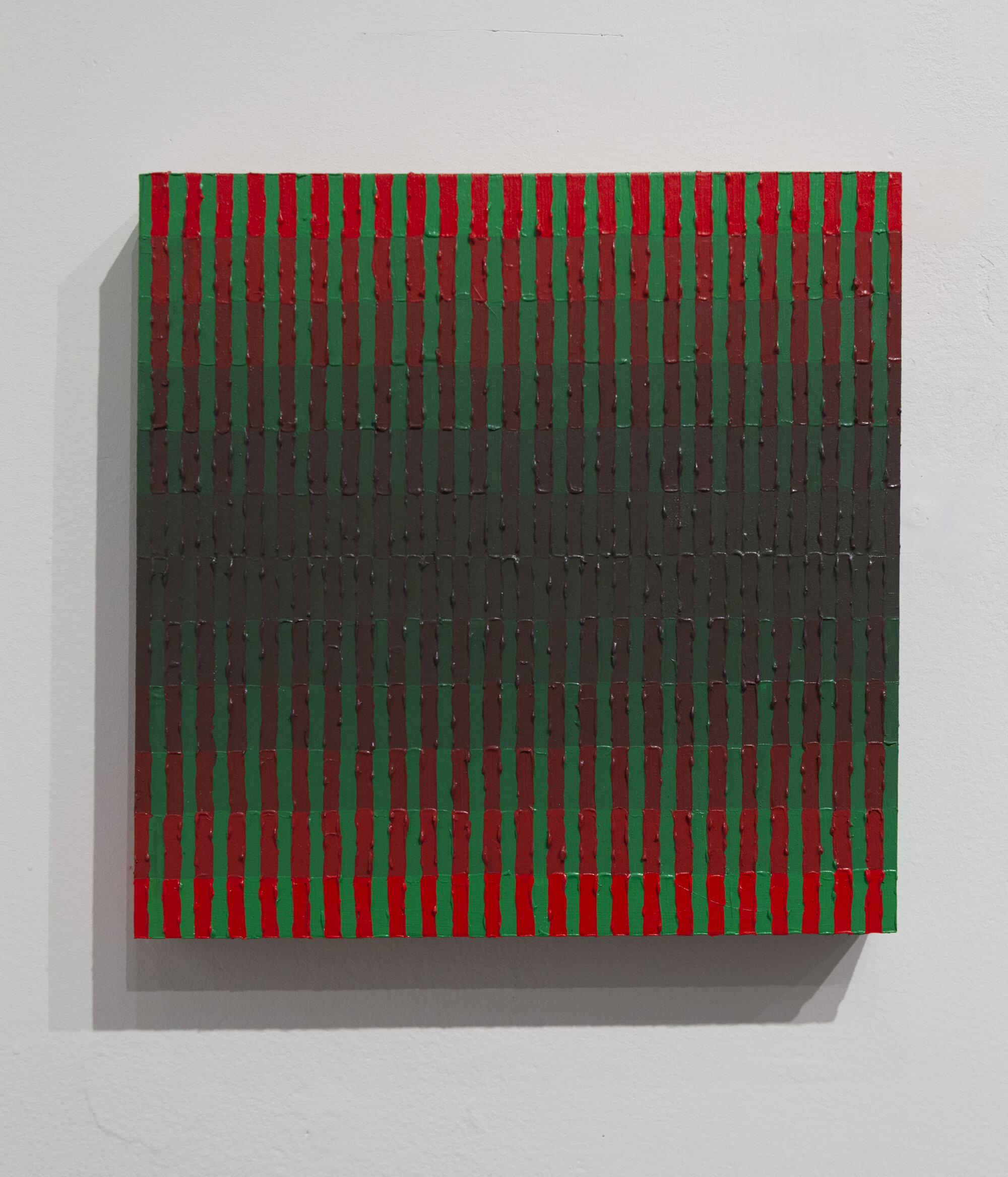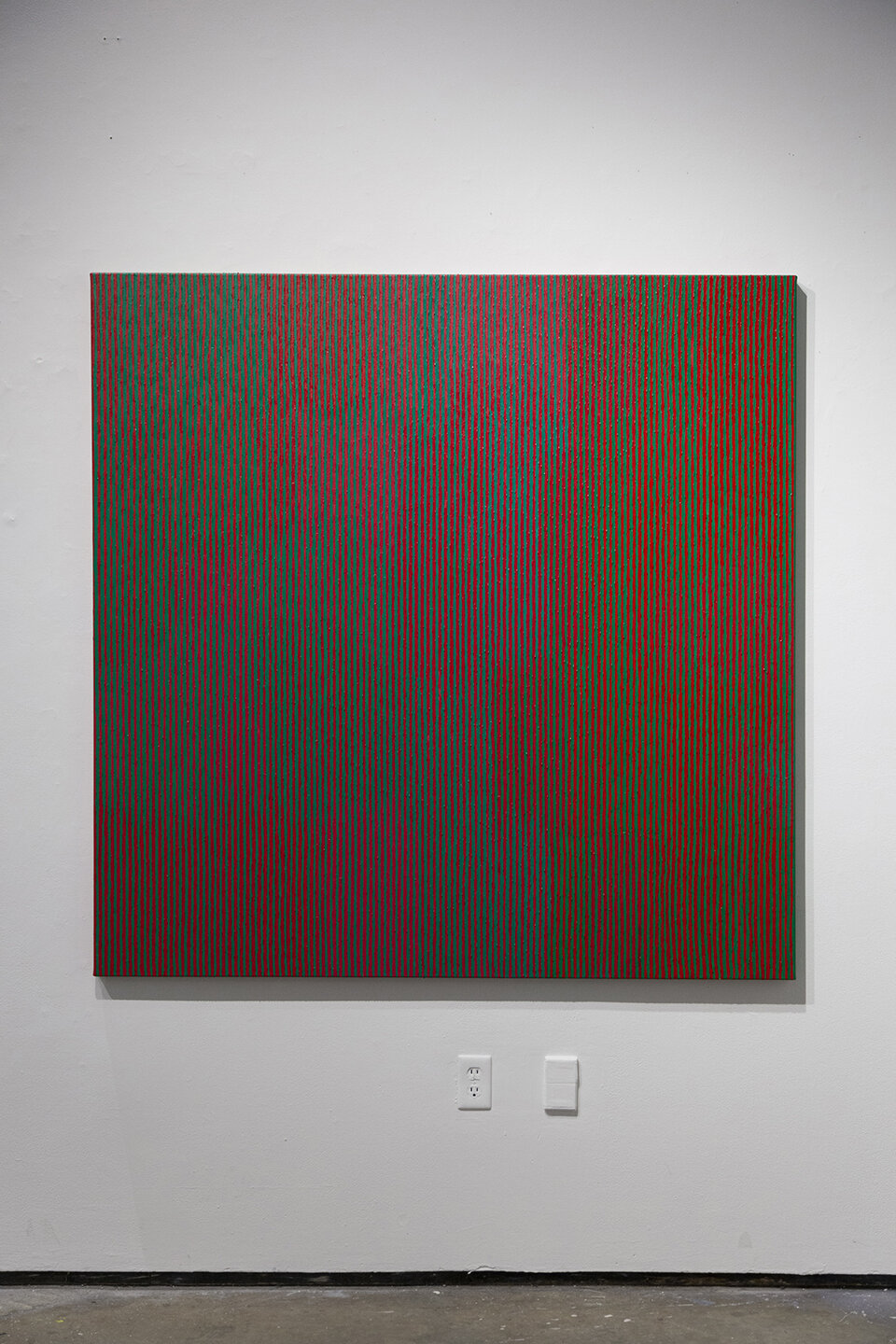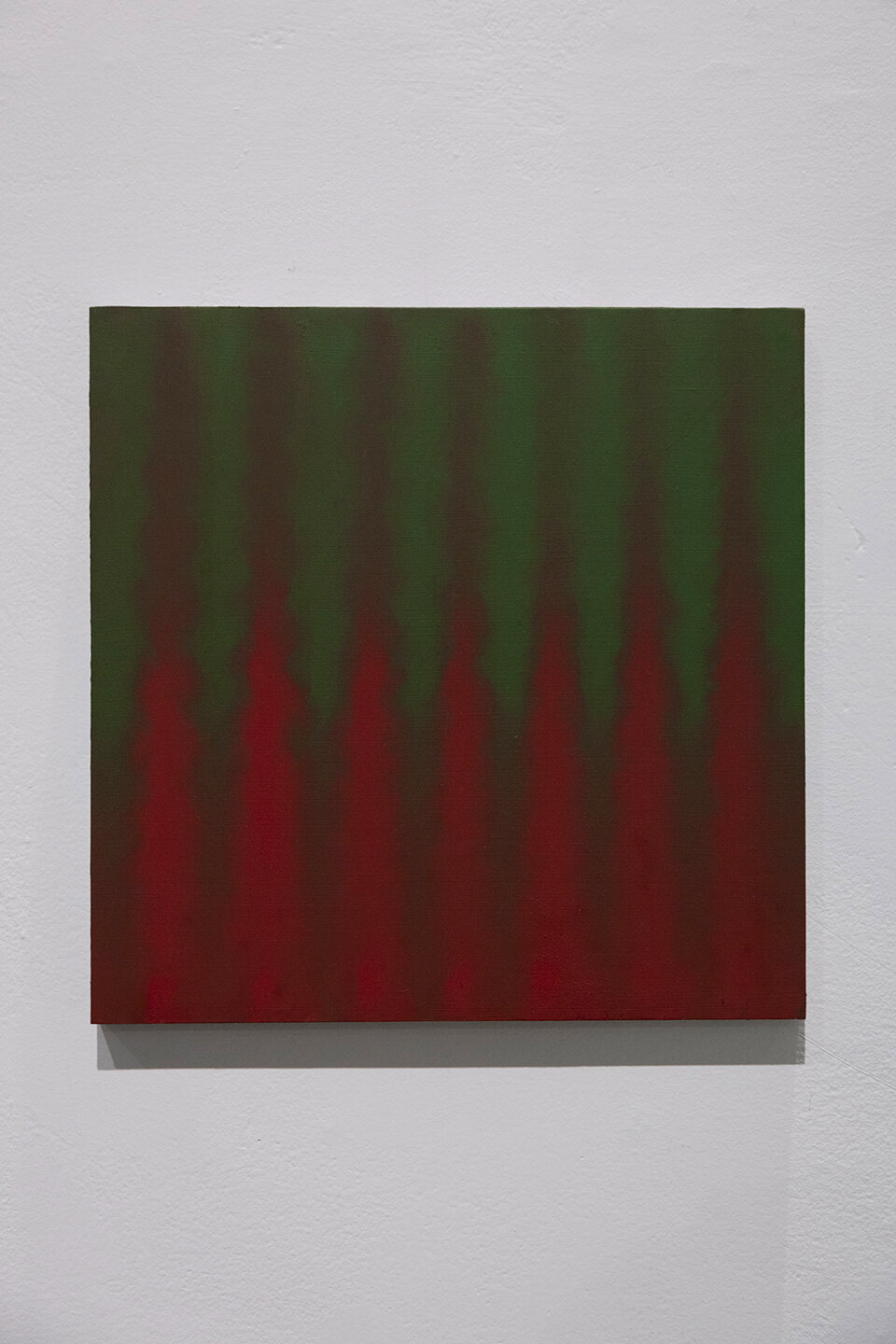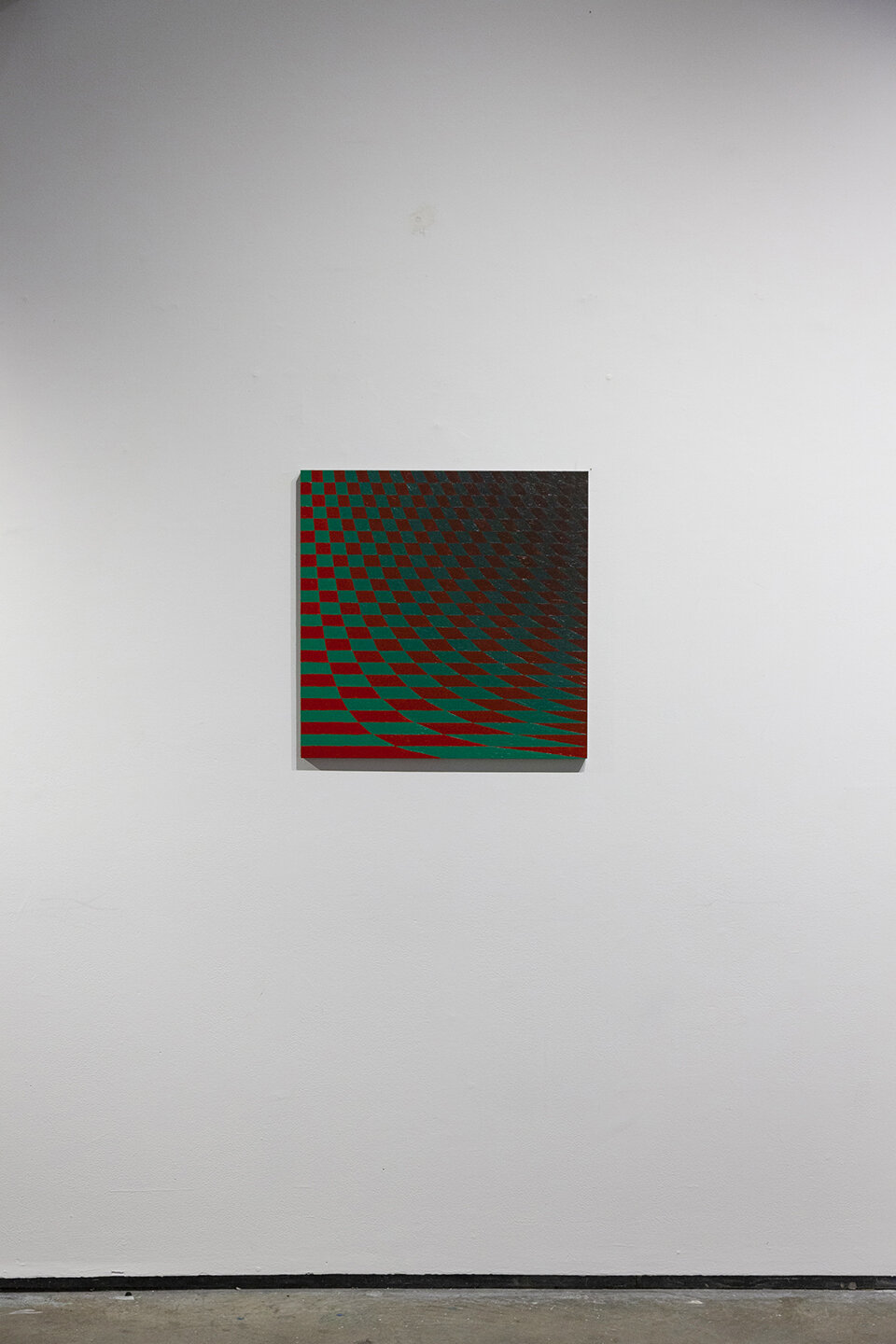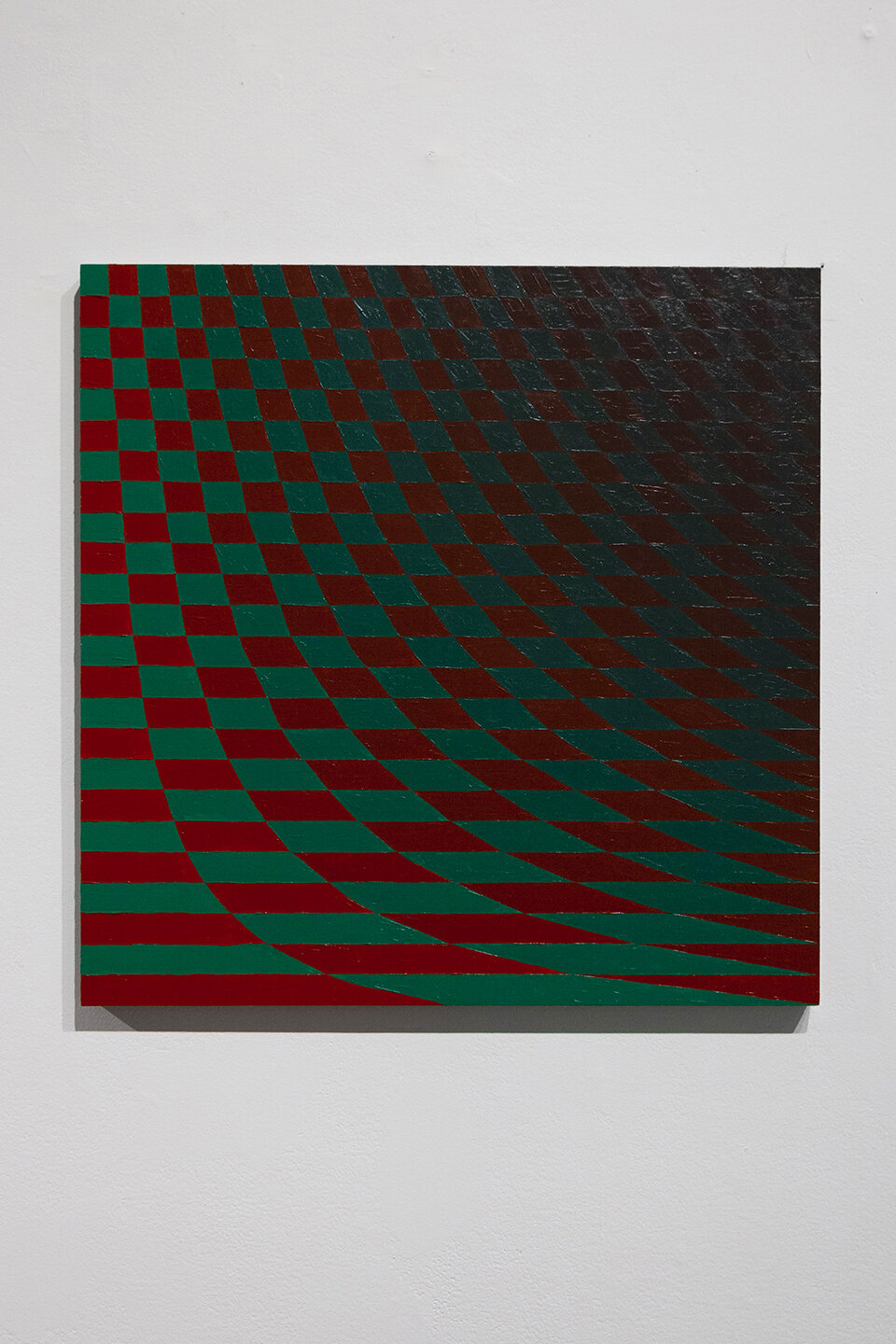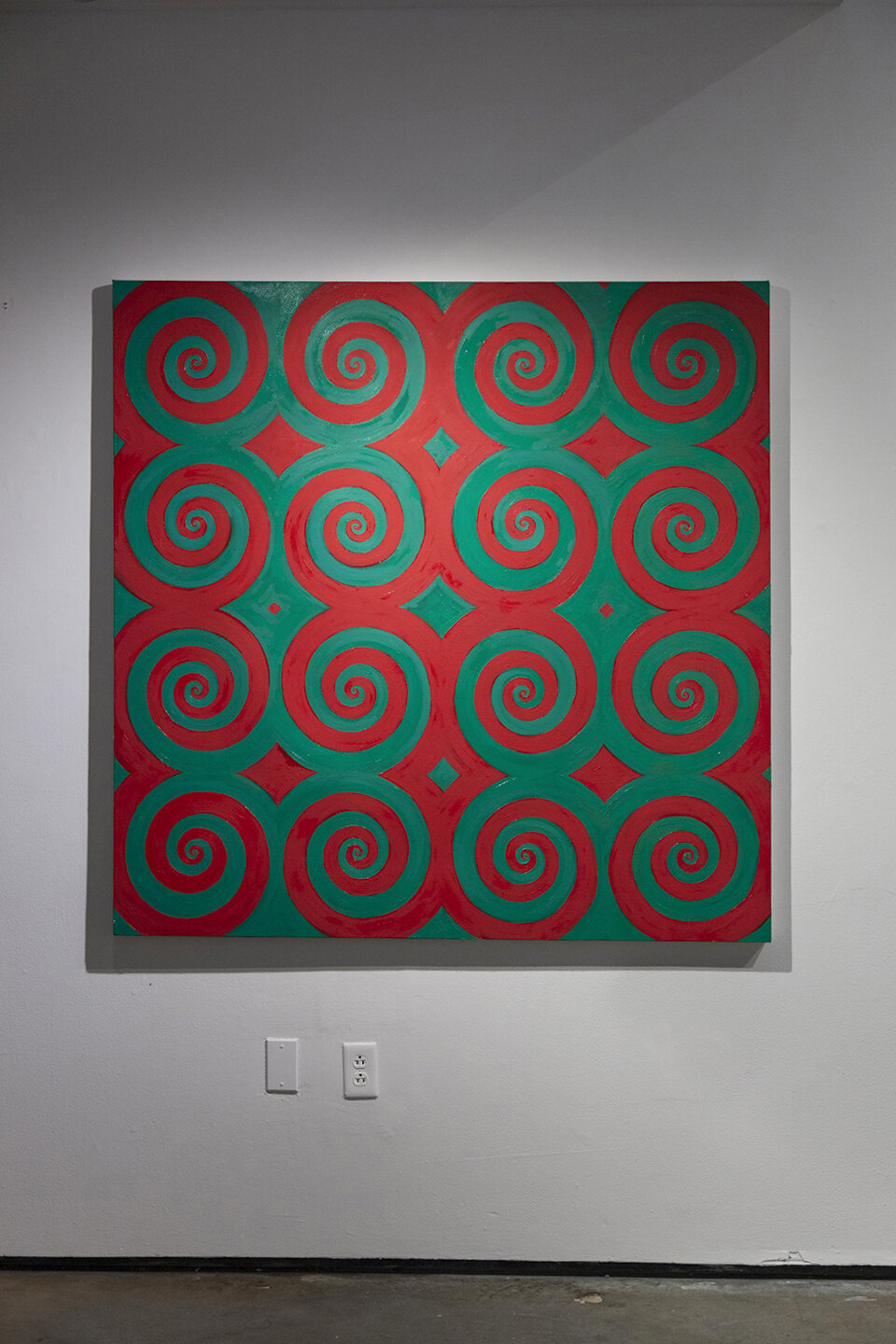2021 Red and Green
Red and green lights have been encoded into drivers’ lexicons since the early 1900s, conveying the antonymic commands stop and go. These colors are commonly used today to indicate other sets of antonyms as well: entrance-exit, right-wrong, good-bad. They encapsulate the function of antonymy without requiring specific training in color theory, which further situates red and green as opposites.
In color theory, red and green are mutual modifiers through simultaneous contrast, meaning that when visually paired, they agitate one another, creating after-images, perceptual vibration, each even shifting the other’s apparent hue. When mixed together, they cancel each other out, creating a grey area that reads as achromatic.
As signifiers for multiple other antonyms, the study of these colors can offer a unique insight into the lexical strategies at work in the processing of nuanced data. These intermediary states are not easily organized into a measurable scale. However, the gray area between concepts is important for subjects at the mercy of power structures. Understanding where tipping points might lie between antonyms, and the forces that push them toward one extreme or another, could help us understand how things that appear to be cleanly separate actually hold a much more complicated truth, and how our organization and classification of stimuli is contingent upon suggestion and contextual influence.

